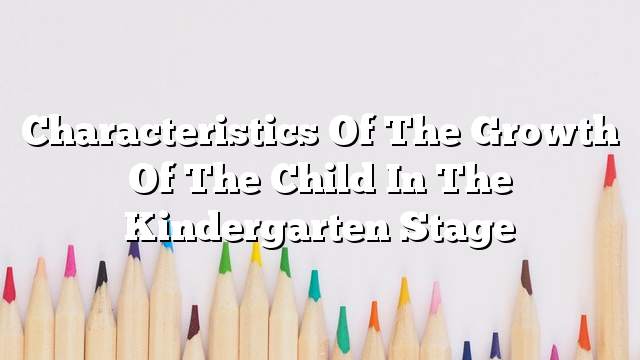Kindergarten stage
The stage of kindergartens, which is the first six years of the child’s life, is one of the most important stages in which it passes, according to many studies and researches, because this stage has many influences on the building and composition of the child’s personality. Before talking about the characteristics of the child’s growth at this stage, Know that the growth of the child is divided into three types: physical growth, social growth, mental development, and we will mention in this article the characteristics of these types of growth in the child at this stage.
Characteristics of mental growth
The child’s mental development in the kindergarten stage is a rapid growth that changes the child greatly; there are many mental characteristics, including:
- The child’s perception of things around him changes from total perception to partial perception.
- Its horizons widen and its ability to think, imagine, remember things and events.
- Be quick-bored and fast-changing; he does not like focusing on one subject for a long time.
- His questions are becoming increasingly clear and curiosity and research are increasing significantly.
- Depends mainly on his five senses in the process of acquiring experience and skills.
- He becomes increasingly aware of the concepts of time, place, and quantities, and his perception of weights is slightly delayed.
Characteristics of social growth
- The intensity of his emotions and strength, and there is a lot of volatility in his reactions and emotions.
- It distinguishes roles played by family members, so as to distinguish between the role of the mother, father, brother and sister, and tries to imitate them in most things.
- It distinguishes between socially acceptable behaviors and unacceptable behaviors. This discrimination is gradual and not one-time, depending on the way in which the family treats it.
- He loves more control than before and loves control and leadership and may be selfish at times.
Characteristics of physical growth
- Physical growth is increasing at this age and the child’s susceptibility to the disease increases.
- The concentration of the child around himself (selfishness) increases.
- The growth velocity between male and female children is much faster in females.
- Muscle growth is slightly delayed and movement, activity and activity increase significantly.
- The bones of the head remain slightly soft, but the child’s ability to control and balance increases, helping to grow the bones of the body properly.
- Depends on his senses to recognize things and explore what is around him.
- It has strong visual ability and long-sightedness to see objects of much larger size than small objects.
- The hands are used with great efficiency and efficiency, with a focus on the proper functioning of his functions.
